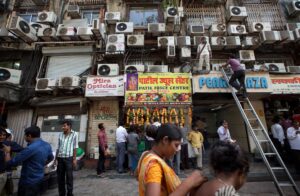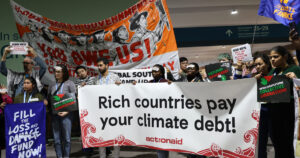In this book, the authors examine the adaptation solutions needed to protect lives, limit economic damage and reduce inequalities in the face of these upheavals.
Through a cross-examination, they share the thoughts that guided their approach, offering a critical analysis of public policies and the contribution of available strategies to climate crisis management. An invitation to rethink adaptation as an essential action for dealing with climate crises.
Adaptation is at the heart of your book, described as both an emergency and an opportunity. Why this choice of approach to adaptation, which may give rise to reservations about mitigation?
It’s true that adaptation has long had a bad press, with some fearing that it would discourage efforts to reduce carbon emissions. This opposition is no longer valid. While mitigation deals with the causes, adaptation offers solutions to deal with the emergency. Sowing sorghum in spring to better resist summer drought – this cereal consumes less water than corn – has an effect on the harvest that follows. Installing a roof window in a house located on the water’s edge to create a refuge in the event of catastrophic flooding immediately reduces the risk of drowning. Because of the inertia of the climate system, the benefits of mitigation take longer to manifest themselves. And they depend on a global effort, conditioned by lengthy international climate negotiations with uncertain outcomes. The United States’ repeated withdrawals from climate agreements continually illustrate this.

In 2017, the United States withdrew from the Paris agreements.
You state that public policies are essential to support adaptation, in particular by guiding individual choices. What priority actions should governments implement to maximize the benefits of adaptation?
For us, the top priority is paradoxically to accelerate mitigation and, more generally, to strengthen environmental protection and natural resource management actions. Businesses, households and farmers have already started to adapt, because they benefit from it in terms of comfort, productivity and resilience to extreme events. Yet the simplest strategies to implement often emit carbon. Take the example of air conditioning in India. In this country, which is much more exposed to extreme temperatures than we are, hundreds of millions of air-conditioning units will be installed over the next few years, thanks to the combined effect of global warming and economic growth that provides a growing proportion of the population with the means to finance them. But while this solution is highly effective in cooling the temperature inside buildings, it emits a lot of greenhouse gases when the electricity used to power it is generated using fossil fuels. This is currently the case in India: three-quarters of the electricity consumed in the country comes from coal-fired power plants. Without an energy transition, the environmental cost of this adaptation could become enormous. Conversely, a resolute decarbonization policy can provide the means to withstand the heat waves that are set to multiply. The need to step up public action to support adaptation also applies to other environmental policies, notably natural risk prevention and water resource management.

The growing demand for air-conditioning in developing countries, as here in Mumbai, India, raises concerns about climate change.
The second priority is the production and dissemination of information. Adaptation is the result of decisions taken by a myriad of players: households, local and national public authorities, businesses and so on. But their choices can only be relevant if they are based on reliable information on climate risks. This applies to emergencies. The disastrous human toll of the recent floods in Valencia, Spain – some 230 dead and missing – can be explained in part by the failure of the warning chain, which led many under-informed residents to take to their cars that morning. Longer-term decisions, such as building or reinforcing dykes, require information at a very detailed geographical level and projections over a wide range of time horizons. Making this information available in the right place, at the right time, to the right people, and in a form that can be easily assimilated, is a fundamental mission for public authorities.
In your book, you place a great deal of emphasis on the potentially deleterious effects of adaptation on social inequalities and poverty. In your opinion, what are the most important pitfalls to avoid in order to guarantee fair adaptation?
The problem is that the ability to adapt is more strongly determined by wealth than by need. Building dykes, installing air-conditioning units, investing in warning and forecasting systems for extreme climatic events or infrastructure all require financial resources. At international level, this is a double whammy for the less advanced countries of the South, which are highly exposed due to their low-latitude location and have limited capacity to adapt. It is in these regions that the possibility of collapse in the face of climate change is at stake, more so than in the developed world, which has the means to avoid it. Hence the crucial question in climate negotiations of how the richer countries, the industrialized nations, China and the Gulf oil states will finance adaptation. Discussions at COP 29, which has just ended in Baku, unfortunately failed to make much headway on this issue. Western countries only agreed to 300 billion a year in funding, far below the needs of the world’s poorest countries.

NGOs are pressing for an increase in the global financial target at COP 29.
At national level, the question is posed a little differently insofar as the most vulnerable are not always the most exposed. According to INSEE, one in seven people live in an area that will experience more than 20 days of heatwave over the coming decades, but the proportion of low-income households is lower than the national average. As another example, episodes of marine submersion, which are set to multiply in France as sea levels rise, will affect more affluent populations. This is hardly surprising, given the price of a seaside residence. At this level, the selectivity of public action is essential. It’s less a question of protecting the most exposed than the most vulnerable.
About the authors








